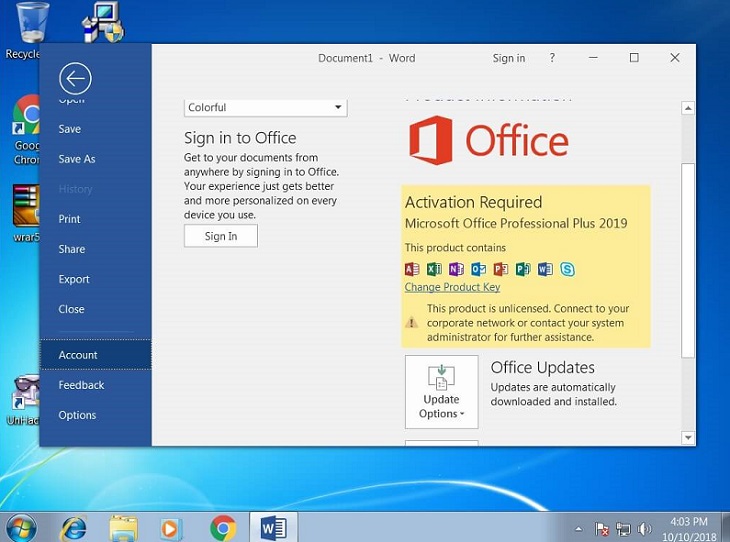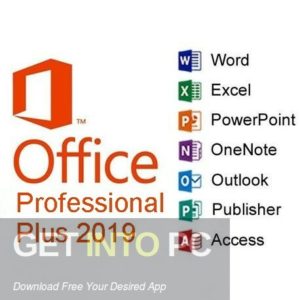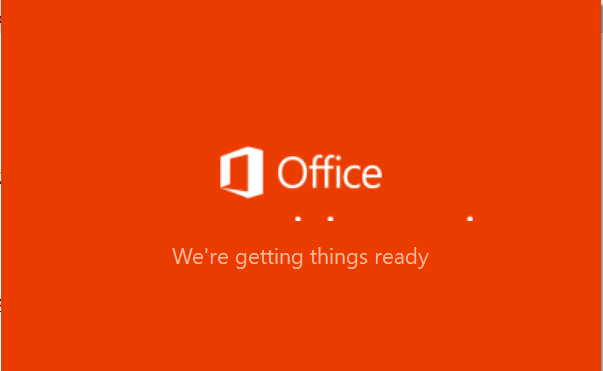Important
- Support for Windows 7 ended on January 14, 2020. Learn more
- Microsoft 365 Apps is no longer supported on Windows 7.
- If you're a home user running Office on Windows 7, see Windows 7 end of support and Office instead of reading this article.
Office 365 and Microsoft 365 are governed by the Modern Lifecycle Policy, which requires customers to stay current as per the servicing and system requirements for the product or service. This includes using Microsoft 365 Apps on a Windows operating system that is currently in support.
See and discover other items: Best microsoft office for pc, microsoft 365 office, microsoft office mac 2019, MS Office 2019, Best windows software for pc, 2013 MacBooks There's a problem loading this menu right now. System requirements of Microsoft Office 2013-2019. Microsoft Office Professional Plus 2013: OS: Windows 10/8.1/8/7/XP/Windows server (32-bit only) MEMORY CARD: 1 GB (32-bit), 2 GB (64-bit) SCREEN RESOLUTION: 1024 x 576 or higher; GRAPHICS HARDWARE: DirectX 10 graphics card. FREE SPACE: 3 GB; PROCESSOR: 1 GHz speed, IA-32 or x64 architecture. Microsoft recently released Office 2019, the latest version of its Windows and Mac office suite, with useful new features slotted almost seamlessly into the familiar interface.A distraction-free.
Using Microsoft 365 Apps on older, unsupported operating systems may cause performance and reliability issues over time. Therefore, if your organization is using Microsoft 365 Apps on devices running Windows 7, we strongly recommend your organization moves those devices to Windows 10.
Security updates will continue for Microsoft 365 Apps on Windows 7
Even though Windows 7 is no longer supported, we've decided to continue to provide you with security updates for Microsoft 365 Apps for the next 3 years, until January 2023. We're doing this to give you additional time to make the transition from using Microsoft 365 Apps on devices running Windows 7 to devices running a supported operating system, such as Windows 10. But, during that time, as long as the device is still running Windows 7, your installation of Microsoft 365 Apps won't receive any new features updates.
Important
- Even with these security updates, Microsoft 365 Apps is no longer supported on Windows 7.
- This information applies even if you have purchased Extended Security Updates (ESU) for Windows 7. After January 2020, security updates for Windows 7 are only available with ESU. For more information, see FAQ about Extended Security Updates for Windows 7.
How to manage Microsoft 365 Apps on Windows 7 after January 2020
Version 2002 is the last version of Microsoft 365 Apps that you can install on devices running Windows 7. Version 2002 is available in Current Channel, Semi-Annual Enterprise Channel (Preview), and Semi-Annual Enterprise Channel.

This means that if you want to continue to deploy and update Microsoft 365 Apps on devices that are running Windows 7, you need to use Version 2002. If you try to install a newer version of Microsoft 365 Apps, such as Version 2005, on a device running Windows 7, you'll receive an error message.
Note
You can continue to use a version of Microsoft 365 Apps earlier than Version 2002 on devices running Windows 7 if that version is still available. For example, you can continue to use Version 1908 of Semi-Annual Enterprise Channel until March 2021. To see the version available in each update channel of Microsoft 365 Apps, refer to the table in Update history for Microsoft 365 Apps.


To deploy or update Version 2002 on devices running Windows 7, you can keep using the same management tools that you're currently using, such as the Office Deployment Tool or Microsoft Endpoint Configuration Manager. Also, Microsoft 365 Apps can remain on the same update channel as before.
If Microsoft 365 Apps is configured to get updates directly from the Office Content Delivery Network (CDN) on the internet, Microsoft 365 Apps on devices running Windows 7 will be updated automatically to the most current release of Version 2002 for that update channel.
Guidance when using Configuration Manager for updates
If you use Configuration Manager and the Software Update management workflow to update installations of Microsoft 365 Apps, we recommend that you create a separate collection for your Windows 7 devices. Then, use a query rule to add members to the collection.
On the 2nd Tuesday of each month, a new update package for Version 2002 that is only for devices running Windows 7 will be made available in the Microsoft Update Catalog. There will be an update package for each architecture (x86 or x64). That update package can be used with whichever update channel of Microsoft 365 Apps you have deployed. There won't be separate update packages of Version 2002 for each update channel. For example, the same update package can be used to update a Current Channel or a Semi-Annual Enterprise Channel installation of Microsoft 365 Apps on devices running Windows 7.
In the Office 365 Updates node, you'll see entries like the following, where ##### will be replaced by the most current build number:
- Microsoft 365 Apps Update for Windows 7 – Version 2002 for x64 based Edition (Build 12527.#####)
- Microsoft 365 Apps Update for Windows 7 – Version 2002 for x86 based Edition (Build 12527.#####)
These update packages are configured to apply only to devices running Windows 7. These update packages can't be used to update Microsoft 365 Apps on devices running other supported operating systems, such as Windows 10.
If you use an automatic deployment rule (ADR), you should create a new rule for these update packages. Then, use the new rule for your collection that contains your Windows 7 devices. We recommend using the 'Title' property and searching for 'Microsoft 365 Apps Update for Windows 7' as well as the architecture you support. If you support both x86 and x64, you can include both updates in one Software Update Package as clients will apply the appropriate update. You should also check other existing ADRs to make sure they don't incorrectly try to apply these update packages, which are only for devices running Windows 7, to devices running other operating systems.
Extended availability of Version 2002
Version 2002 will be available until January 2023 and will receive security updates, as needed, during that time. For a list of security updates included in releases of Version 2002, see Release notes for Microsoft 365 Apps Security Updates.
Versions of Semi-Annual Enterprise Channel are available usually for only 14 months, but we're making an exception for Version 2002 in order to align with the availability dates of Windows 7 ESU. This extended availability for Version 2002 also applies to other update channels, such as Current Channel and Semi-Annual Enterprise Channel (Preview).
The extended availability of Version 2002 until January 2023 applies only to devices running Windows 7.
After moving Microsoft 365 Apps to a supported Windows operating system
After you move Microsoft 365 Apps to a supported Windows operating system, you can configure Microsoft 365 Apps to begin receiving newer versions and feature updates again. Since updates for Microsoft 365 Apps are cumulative, you'll receive all the feature updates that you missed while your device was running Windows 7.
If you're getting updates directly from the Office CDN on the internet, after the device is moved to a supported operating system, Microsoft 365 Apps will be updated automatically to the most current version available for that update channel and will start receiving new features again.
What about other versions of Office on Windows 7?
Non-subscription versions of Office used by organizations, such as Office Professional Plus 2016 or Office Standard 2013, will continue to be supported based on the Fixed Lifecycle Policy. To see specific end of support dates for non-subscription versions of Office, go to Search Product and Services Lifecycle Information.
Even if your version of Office is still supported, Windows 7 will no longer receive security updates after January 2020, leaving it vulnerable to security threats, unless you have ESU. We recommend that you move to a supported operating system, such as Windows 10.
Additional information
- This information also applies to the following products:
- The subscription versions of the Project and Visio desktop apps. For example, if you have Project Plan 5 or Visio Plan 2.
- Microsoft 365 Apps for business (previously named Office 365 Business), which is the version of Office that comes with some Microsoft 365 business plans, such as Microsoft 365 Business Premium.
- For information about Windows Server 2008 R2, see Windows Server end of support and Microsoft 365 Apps.
- For end of support dates for different versions of Office on various versions of Windows, see the Office configuration support matrix.
- Other Microsoft resources are available to help you make the transition to using Microsoft 365 Apps on devices running Windows 10, including FastTrack and App Assure.
- To discuss or learn more about end of support for Office versions, visit Microsoft Office End of Support on the Microsoft Tech Community.
- If you're using Microsoft 365 Apps for enterprise on a device running Windows 7 or Windows Server 2008 R2, you'll continue to see Office 365 ProPlus under the Product Information section when you go to File > Account in an Office app, such as Word. If you're using Version 2002 of Microsoft 365 Apps for business, you'll see Microsoft 365 for business under the Product Information section.


Word is one of the most popular and commonly used products from Microsoft Corporation. The latest version of Microsoft Word integrates well with Microsoft Office 365 and serves as a full-fledged document processing software. With the program, you can type, publish, and edit documents in real-time. Microsoft Word comes with improved features but retains the original layout for ease of use. It runs on Windows 10 and above, and is also available for Mac, Android, and iOS devices.
Create high-quality documents with ease!
If you’ve been using a Windows PC, it’s likely that you’re already familiar with Microsoft Word. For document processing, typing, publishing, and editing, Word has been the standard program in Windows devices.
In recent years, it has received some tough competition from Google Docs. However, the veteran word processing software has been able to retain a strong fan following. The simple interface, plenty of features, and integration with Microsoft Office 365 products make Word an excellent choice.
Is Microsoft Word easy to use?
While programs like Trio Office come with a simple interface, Microsoft Word’s ribbon interface has been hugely popular among Windows users. For many years, it has been able to give Word a relevant and fresh look, while most of the computing world made a radical shift to the web and mobile devices.
The only drawback is that some labels and icons might confuse users who aren’t familiar with Microsoft Office, OneDrive, or similar products. But if you’ve always been a Windows user, you’d find it easy to navigate through the program. With the latest version of the program, the interface remains uncluttered and clean.
Microsoft Word comes with the ‘Tell me what you want to do’ feature, which is quite useful for beginners and veterans alike. It acts as an ‘assistant’ and allows you to save a good amount of time. While it won’t be wrong to say that the interface could do with some improvements, Microsoft has done a good job of offering a range of features without much complexity.
Can you work in real-time with Microsoft Word?
With Microsoft Word, you can continue to work in real-time, at least with the full version. Considering the increasing adoption of online word processing software and tools, Microsoft has tried to introduce some significant improvements to the program. With the original layout, you get better integration with Microsoft Office 365, which lets you work in the Cloud.
Since you’re able to work in real-time, editing is much easier with Word. The program makes it easier to collaborate with several people simultaneously and lets you view edits or changes in real-time. Microsoft Word keeps storing progress and automatically updates the document smoothly and efficiently.
Does Microsoft Word feature a translator?
Microsoft Office 2019 With Windows 7 Service Pack
With the all-new translation tool, you can break a wide range of language barriers. The feature allows you to translate several phrases or even the entire page into a different language.
This saves you from the trouble of using third-party translation software. Within a couple of clicks, you can set the language to any of the ones available in the program’s huge accessory pack. This lets you share a polished document without any grammatical or spelling errors.
Does Microsoft Word offer any additional features?
For a lot of people, reading long text can be straining and tedious. With Microsoft Word, you can use several interesting features, such as spacing adjustment, page color changes, etc. This gives your eyes a much-needed break. Moreover, Word can read the text, ensuring you don’t have to indulge in tiring and long reading sessions.
Word integrates perfectly with Microsoft Office 2019, and leverages features like 3D image concerts and LaTex, which turn the program into a powerful learning tool. With 3D models, you can bring your projects and content to life, and can even write formulas. While these features may be overwhelming for beginners, they’re quite useful for veteran users.
Our take
Microsoft Word is an excellent document processing software. It goes beyond the usual programs available online. Moreover, the regular updates have transformed Word into a full-fledged collaboration and learning tool.
The integration with Microsoft Office 365 is an additional benefit. The Enterprise version can be used by small businesses, while there’s a dedicated subscription for students. Undoubtedly, this is one of the most ideal choices among word processing apps.
Microsoft Office 2019 Pro Plus Windows 7
Should you download it?
Yes, definitely! Microsoft Word is the perfect choice for Windows PCs. With minimum hassles and a simple interface, you can use a wide range of features to leverage real-time editing, translation, and automatic updates. The program is also available for other operating systems.
Microsoft Office Upgrade 2019 Free
2019
